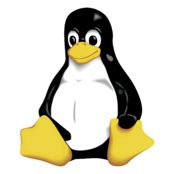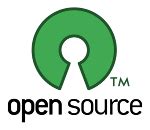What is Linux?
From smartphones to cars, supercomputers and home appliances, home desktops to enterprise servers, the Linux operating system is everywhere.
Linux has been around since the mid-1990s and has since reached a user-base that spans the globe. Linux is actually everywhere: It’s in your phones, your thermostats, in your cars, refrigerators, Roku devices, and televisions. It also runs most of the Internet, all of the world’s top 500 supercomputers, and the world’s stock exchanges.
But besides being the platform of choice to run desktops, servers, and embedded systems across the globe, Linux is one of the most reliable, secure and worry-free operating systems available.
Just like Windows, iOS, and Mac OS, Linux is an operating system. In fact, one of the most popular platforms on the planet, Android, is powered by the Linux operating system. An operating system is software that manages all of the hardware resources associated with your desktop or laptop. To put it simply, the operating system manages the communication between your software and your hardware. Without the operating system (OS), the software wouldn’t function.
Why use Linux?
This is the one question that most people ask. Why bother learning a completely different computing environment, when the operating system that ships with most desktops, laptops, and servers works just fine?
To answer that question, I would pose another question. Does that operating system you’re currently using really work “just fine”? Or, do you find yourself battling obstacles like viruses, malware, slow downs, crashes, costly repairs, and licensing fees?
If you struggle with the above, Linux might be the perfect platform for you. Linux has evolved into one of the most reliable computer ecosystems on the planet. Combine that reliability with zero cost of entry and you have the perfect solution for a desktop platform.
That’s right, zero cost of entry… as in free. You can install Linux on as many computers as you like without paying a cent for software or server licensing.
Let’s take a look at the cost of a Linux server in comparison to Windows Server 2022. The price of the Windows Server 2022 Standard edition is $2,653 AUD (purchased directly from Microsoft). That only includes Client Access License (CALs) for 10 users and you still need licenses for other software you may need to run (such as a database, a web server, mail server, etc.). Microsoft Office (365) can be anywhere from $12 to $85.30 per user per month! For example, a single user CAL, for Windows Server 2022, costs $80.95. If you need to add 10 users, for example, that’s $809.50 more dollars for server software licensing. With the Linux server, it’s all free and easy to install. In fact, installing a full-blown web server (that includes a database server), is just a few clicks or commands away.
If zero cost isn’t enough to win you over–what about having an operating system that will work, trouble free, for as long as you use it? We’ve used Linux for over 25 years (as both a desktop and server platform) and have not had any issues with ransomware, malware, or viruses. Linux is generally far less vulnerable to such attacks. As for server reboots, they’re only necessary if the kernel is updated. It is not out of the ordinary for a Linux server to go years without being rebooted. If you follow the regular recommended updates, stability and dependability are practically assured.
What is FOSS?
Free Open Source Software (FOSS) refers to something people can modify and share because its design is publicly accessible.
The term originated in the context of software development to designate a specific approach to creating computer programs. Today, however, "open source" designates a broader set of values—what we call "the open source way." Open source projects, products, or initiatives embrace and celebrate principles of open exchange, collaborative participation, rapid prototyping, transparency, meritocracy, and community-oriented development.
Open source software is software with source code that anyone can inspect, modify, and enhance.
"Source code" is the part of software that most computer users don't ever see; it's the code computer programmers can manipulate to change how a piece of software—a "program" or "application"—works. Programmers who have access to a computer program's source code can improve that program by adding features to it or fixing parts that don't always work correctly.
What's the difference between open and closed software?
Some software has source code that only the person, team, or organisation who created it—and maintains exclusive control over it—can modify. People call this kind of software "proprietary" or "closed source" software.
Only the original authors of proprietary software can legally copy, inspect, and alter that software. And in order to use proprietary software, computer users must agree (usually by signing a license displayed the first time they run this software) that they will not do anything with the software that the software's authors have not expressly permitted. Microsoft Office and Adobe Photoshop are examples of proprietary software.
Open source software is different. Its authors make its source code available to others who would like to view that code, copy it, learn from it, alter it, or share it. LibreOffice and the GNU Image Manipulation Program are examples of open source software.
Why do people prefer using open source software?
Control. Many people prefer open source software because they have more control over that kind of software. They can examine the code to make sure it's not doing anything they don't want it to do, and they can change parts of it they don't like. Users who aren't programmers also benefit from open source software, because they can use this software for any purpose they wish—not merely the way someone else thinks they should.
Training. Other people like open source software because it helps them become better programmers. Because open source code is publicly accessible, students can easily study it as they learn to make better software. Students can also share their work with others, inviting comment and critique, as they develop their skills. When people discover mistakes in programs' source code, they can share those mistakes with others to help them avoid making those same mistakes themselves.
Security. Some people prefer open source software because they consider it more secure and stable than proprietary software. Because anyone can view and modify open source software, someone might spot and correct errors or omissions that a program's original authors might have missed. And because so many programmers can work on a piece of open source software without asking for permission from original authors, they can fix, update, and upgrade open source software more quickly than they can proprietary software.
Stability. Many users prefer open source software to proprietary software for important, long-term projects. Because programmers publicly distribute the source code for open source software, users relying on that software for critical tasks can be sure their tools won't disappear or fall into disrepair if their original creators stop working on them. Additionally, open source software tends to both incorporate and operate according to open standards.
Community. Open source software often inspires a community of users and developers to form around it. That's not unique to open source; many popular applications are the subject of meetups and user groups. But in the case of open source, the community isn't just a fanbase that buys in (emotionally or financially) to an elite user group; it's the people who produce, test, use, promote, and ultimately affect the software they love.
Where can I learn more about open source?
We recommend you read opensource.com's open source FAQs, how-to guides, and tutorials to get started.
